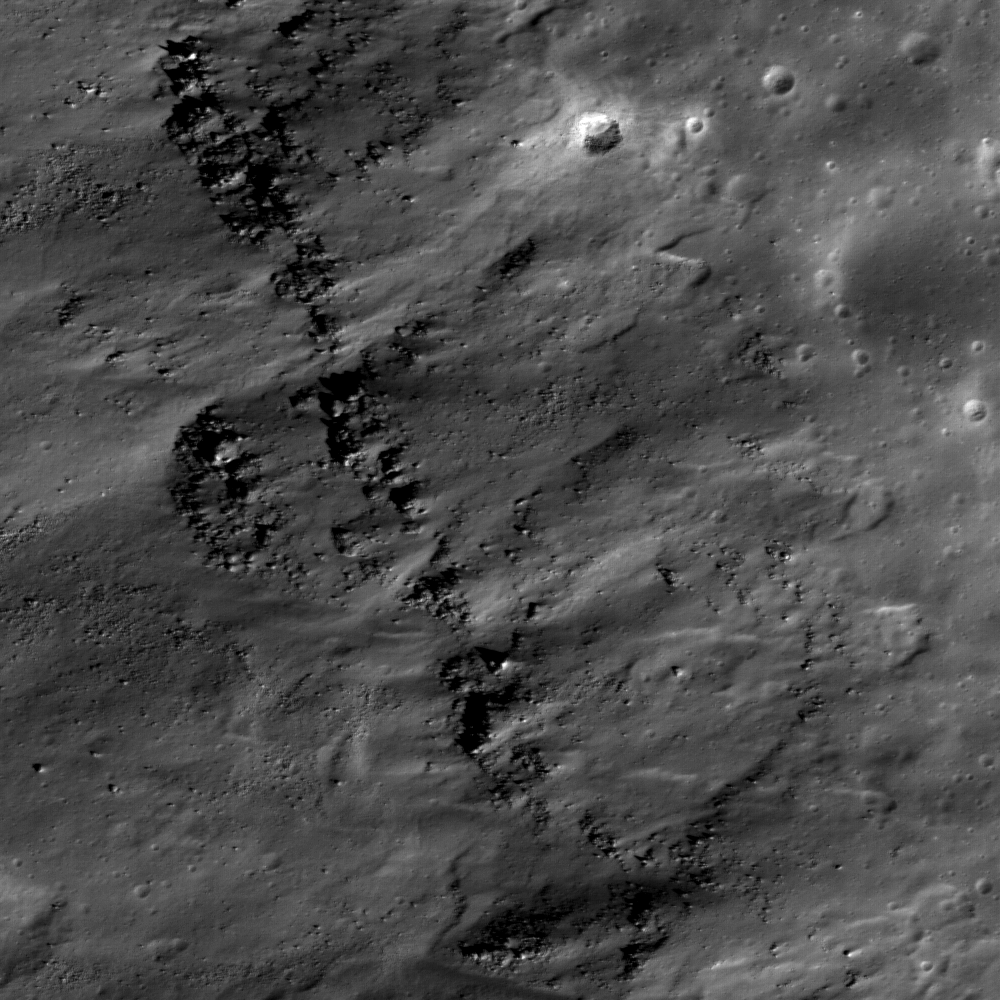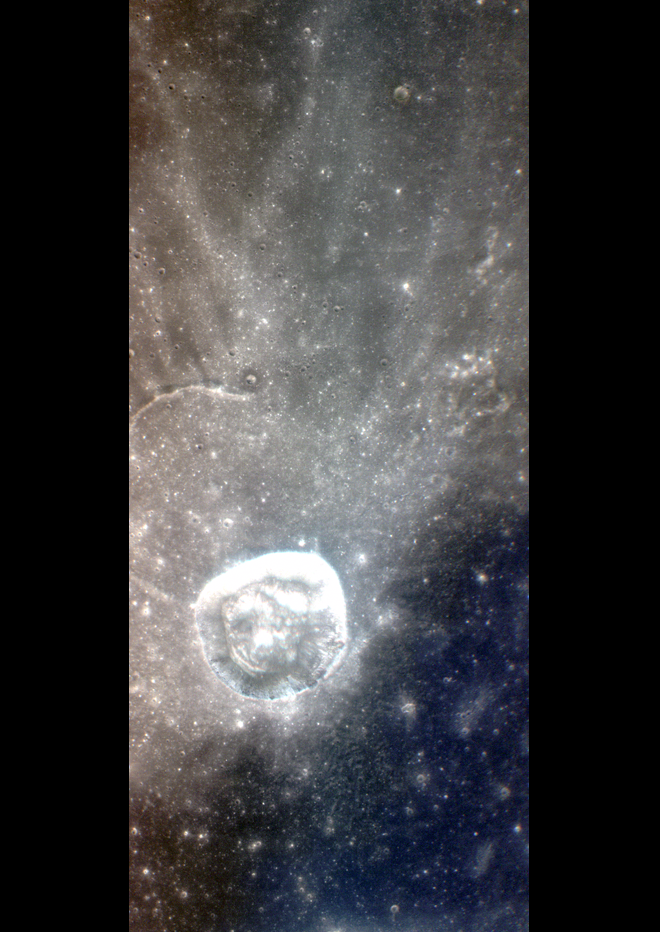
Lichtenberg crater is of Eratosthenian age, 20-km across and 1.2-km deep, located in western Oceanus Procellarum (31.8°N and 67.7°W). It is named after George C. Lichtenberg, a German professor of experimental physics (16th century). Lichtenberg has an extensive ejecta blanket with highly reflective rays which extend to the North more than 100 kilometers from the crater rim. Within the detailed image shown above, distinct layering inside the crater wall can be seen. These layers are probably outcrops of the original surface lavas which were deposited before impact event.
Lichtenberg's high reflectance rays are caused by impact-related ejection of high albedo highland material from beneath the low albedo mare basalts that flooded the region before the crater formed. In the enhanced color wide angle camera (WAC) image above, the bright rays of ejecta can be seen extending away from the crater to the north. However, they are not visible to the south and east of the crater. This is because in this region, the ejecta blanket was later buried by mare basalt. The stratigraphic principle of superposition tells us that this basaltic flow must be younger than the Lichtenberg impact crater, and is thus one of the youngest volcanic deposits on the Moon! This young basalt flow is characterized by its dark, smooth, and homogeneous surface with a low crater frequency, compared to other areas around Lichtenberg crater.
This exciting region near the southeast rim of Lichtenberg is a Constellation region of interest. Exploration of this location offers the opportunity to study one of the youngest surfaces on the Moon. Crater size-frequency distribution measurements suggest that Lichtenberg crater rays southeast of the rim are covered by basalts that are approximately 1.7 billion years old. However, this region has not yet been sampled directly during any lunar mission, so this age is only an estimate. Sending astronauts to the southeast rim of Lichtenberg will offer the opportunity to collect samples of these mare basalts and determine the age of this youngest lunar volcanism to better understand the geological evolution of the Moon.
Explore the Lichtenberg Crater Constellation region of interest yourself!
Published by Mike Zanetti on 15 June 2010
